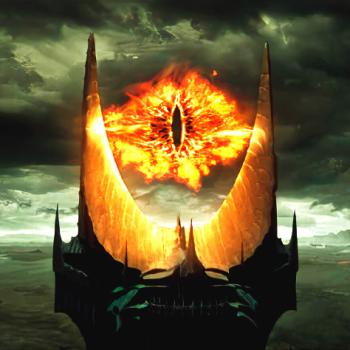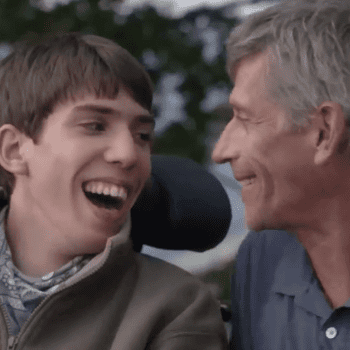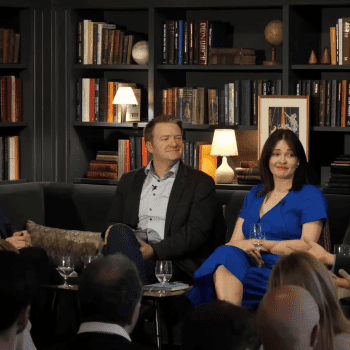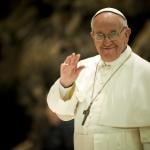Quickly: Who’s the most talented entertainer you can name? For many, it would be the man who just took his own life last month. An older generation might name Dick Van Dyke. Yet another generation might reach still further into the past, to silent film stars like Charlie Chaplin or Buster Keaton. What do legends like these all share in common? Answer: They all had an extraordinary gift for making anyone happy, except themselves.
To that remarkable list, I would add another name. I would add the name of the man who immortalized laughter in three short minutes of pure genius on film. I would add the name of Donald O’Connor.
Perhaps Paramount exec A. C. Lyles said it best: “Donald O’Connor’s name, spelled backwards, would be talent.” Gene Kelly simply dubbed him “The O’Connor.” But his story sounds too painfully familiar: a lightning-fast comic wit, a master of improv, full of explosive energy and beloved by fans, yet privately haunted by divorce, addiction and depression. Except that his story does not end like so many other sad, sad stories. No, my friends. This is a story that ends with hope.
It begins on the morning of August 28th, 1925, when his mother woke from exhausted slumber to hear, “He’s a fine boy. And his name is Donald O’Connor.” The voice belonged to the woman who had found Effie O’Connor beginning labor in a hotel room, while the rest of the O’Connors carried on the family vaudeville act. She had taken her to the hospital and kept watch all night. “Who said so?” whispered Effie. “Me,” the woman replied matter-of-factly. “I’ve always liked the name Donald.”
Effie was a bareback rider, a childhood runaway from Decatur, Illinois. Her husband, John O’Connor, was a strong-man. He too had run away from his home across the sea in County Cork, Ireland, hitching his fortunes to a wagon show bound for America. They met in the circus and married when she was 14. Donald was the youngest of seven, three of whom had already died in childbirth.
The world of show business was a world of tradeoffs. Donald was at once another mouth to feed and another $25 for the tight-knit family troupe—that is, as soon as he could be semi-balanced on a stage. Like gypsies, they traveled the country in their REO Speedwagon, plying their wares of laughter. But death’s pale horse was never far behind. In the same month that Donald earned his first paycheck, at the ripe old age of 1, his 6-year-old sister ran across the street and was killed instantly by a Ford. Had she not left little Donald’s stroller on the sidewalk to make the run, he might have shared her fate. Mere months later, John O’Connor collapsed of a heart attack. His death would haunt Donald for decades to come. He came to know his father only through others’ recollections of him—this man they called “the Nijinsky of acrobats,” who could leap to impossible heights and hold a team of elephants together with his bare hands.
Still, the show went on, and Donald quickly grew into his role. In his words, “You learned to be great real fast. You went out there and caught the audience’s attention in the first 25 seconds or you ruined it for the family. If you heard laughter you knew it was working.” Meanwhile, he learned his first dance steps by pure osmosis on the streets, in the corner drug stores. Nobody ever put a name to any of it for him. He knew only that he loved it, and that show business was the only life he would ever want. The O’Connors shared the stage with everyone from the Marx Brothers, to Abbot & Costello, to Jimmy Durante, to Al Jolson. No chance to watch the masters at work was lost on the sharply observant lad.
Donald’s stoicism under intense duress developed at an early age. Handstand tricks made broken arms a constant risk for him and his brothers. When Donald’s turn came, he kept silent and repeated the trick on the broken arm for four shows in a row. At another show, his finger was accidentally slammed in a door at the exact moment of his stage cue. Although he was less than ten, he had the showman’s instinct to yell “Vamp! Vamp!” to the pianist as he struggled to free himself. The finger was later confirmed broken.
By age eleven, he was already slaying them in the aisles. His first big film break was due as much to luck as to talent, when a Paramount scout caught the family act at the right benefit dinner and pounced: “Get that kid!” The next thing Donald knew, he was playing Bing Crosby’s kid brother and learning how to speak softly for the camera. Bing took the boy under his wing and gave him valuable professional guidance, privately asking, “Isn’t there anything he can’t do?” The picture was a hit. A trio number with Bing, Donald and Fred MacMurray, in which Donald sang harmony, played accordion, and strutted a few moves, showcased his already considerable gifts. Watch two other clips of his very early work here and here.
Young Donald mingled easily with his new peers, promptly developing a crush on the young Judy Garland. (They became lifelong friends.) In the next year, he churned out roughly one film per month, playing kid brothers, cute sons, and boyish pals. Financially, it was a godsend to his family, but Donald’s mature reflections on child stardom were not so favorable. In a 1960 interview, he said that “They [child stars] are exposed to failure and money at the wrong times.” Of his own career, he recalled that so many people had a stake in his success, the only person he could ultimately count on “for honest, objective advice” was himself. Behind the scenes, he struggled with his mother’s almost obsessive domination of him. Traumatized by his sister’s death, Effie wouldn’t let him cross the street until he was 13. Judy Garland recalled the day they forgot and ran across one together, for which Donald was punished with a slap across the face.

In true show biz style, Donald was unceremoniously dropped from Paramount’s roster as soon as he began outgrowing his juvenile wardrobe. It was a bitter pill, but he took the news on the chin, with a glint of rebellion: “So what! I’ll play this circuit again.” There was nowhere to go but back to the family act. Then another cruel twist of the knife came in the death of his older brother Billy, from scarlet fever. Speaking to the BBC decades later, Donald would recall that Billy was “the most magnificent” comedic talent of them all.
In 1941, Donald got a second break when Universal Pictures invited him to join an elite group of teenage dancers called The Jivin’ Jacks and Jills. With no formal training, he was a calculated risk, one the studio almost regretted when he was initially pronounced “unteachable.” Under the guidance of choreographer Louis Da Pron, he spent the group’s first couple pictures sweating to catch up in the background while the prodigies around him took the spotlight. He was ruthlessly self-deprecatory when recalling this baptism by fire in later years, telling the BBC, “I’m a klutz….It takes me twice, three times as long as anyone else to learn anything.” Under grueling budget and time constraints, the young dancers managed to produce excellent work that remains fresh and alive today. (Other notable members included future choreographer Bob Fosse and ballet star Tommy Rall, who played Frankincense in Seven Brides for Seven Brothers.)
Donald would break through to become the group’s star player, stealing the show with his equally charismatic partner Peggy Ryan. Their B musicals kept young people packing the theaters and boosted morale for wounded American GIs. (One would tell O’Connor years later, “You and Peggy Ryan were always coming over the horizon.”) Together, the dancing pair created a brilliant fusion of skill and slapstick. One number required Ryan to land a precisely controlled high kick mere inches away from O’Connor’s chin, while still appearing to make contact. This montage shows his chemistry with both Ryan and fellow co-star Gloria Jean (who shared some priceless stories about Donald in her autobiography, reviewed here):
O’Connor was working all hours to bring in money by the fistful for Universal, but he personally saw only a fraction of it. “I never knew how important I was. If I had, I would have asked for more money!” Meanwhile, he had his eye on a girl—Gwen Carter, a would-be actress whose brother Ed would go on to play bass/guitar for the Beach Boys. They eloped to Mexico after a whirlwind courtship and said their vows just before Donald was drafted in 1944, to entertain the troops. But childhood friend and colleague Gloria DeHaven already saw warning clouds on the horizon. “Gwen was a bit like his mother, to be honest. She was possessive… extremely possessive of him. But he loved her.” They had a child right away, a little girl named Donna. The choice to marry may have seemed like a product of youthful haste (they were 18 and 17), yet this 1949 interview with O’Connor tells a different story:
It’s a wonder to me now, looking back on everything, that I had enough good solid sense to consider marriage. And it’s even more surprising that Gwen and I were as realistic about it as we were. We knew tying the knot was not a hit or miss proposition and that we would want a family some day. We even went so far as to discuss the future. Oh, we were very profound for a couple of young kids.
It was in the army that Donald got his first taste of what would become a lifelong demon: alcohol.
Work became scarce after the war, but a modest burst of film opportunities towards the end of the decade put food on the table and gave O’Connor a handful of stellar set pieces. Bits of some of them would later be incorporated into his crowning achievement: “Make ‘Em Laugh.” Among these early works, I’m especially partial to his turn in Are You With It, as a math whiz with a hidden talent for hoofing it on two tables at once. He’s joined here by his trainer Louis Da Pron (1:45, in the bow tie):
O’Connor’s great gift was balancing effortless grace with calculated clumsiness. Watching his razor-fine tapping in this clip, it’s easy to forget that he spent much of his career disguising his athleticism under pratfalls and slapstick. In fact, he was an expert at all the things he pretended to be inept at. Like his father before him, he could master any sport that “didn’t take too long to learn,” from baseball, to swimming, to tennis, to boxing. He had picked up the gloves as a child when he was bullied for the wardrobe and hair length required in the family vaudeville act. The ring would later become an escape outlet for his coiled up energy as his marriage slowly crumbled.
In 1950, O’Connor unintentionally spawned a cult phenomenon when he was cast as a bumbling GI opposite a talking mule named Francis. The first picture was a fluke smash, and the ensuing parade of potboiler sequels would hang like an albatross around O’Connor’s neck for the next decade. The conceit of the series is amusing, but it wore thin over multiple re-hashings of the same basic plot. (O’Connor famously joked that he eventually decided to quit when the mule began getting more fan mail than he did.)
Fortunately, a worthier shot at immortality was waiting for him just around the corner, when he got the call from dancer/choreographer Gene Kelly to play his sidekick in Singin’ In the Rain. Kelly was already an established force in Hollywood, with ground-breaking work like Anchors Aweigh and American in Paris to his name. He had been watching O’Connor’s career closely, becoming frustrated as a good break failed to present itself to the talented young performer. He wanted to give this kid a shot at the recognition he deserved. The part of Cosmo Brown was originally going to be written for a non-dancer, but Kelly insisted that it be a physical role where his partner would match him stride for stride. Universal reluctantly agreed to let MGM borrow their prize player. This time, O’Connor made sure the check was coming to his mailbox.
(This concludes Part I. The Donald O’Connor story will continue with Singin’ In the Rain and more tomorrow in Part II!)















